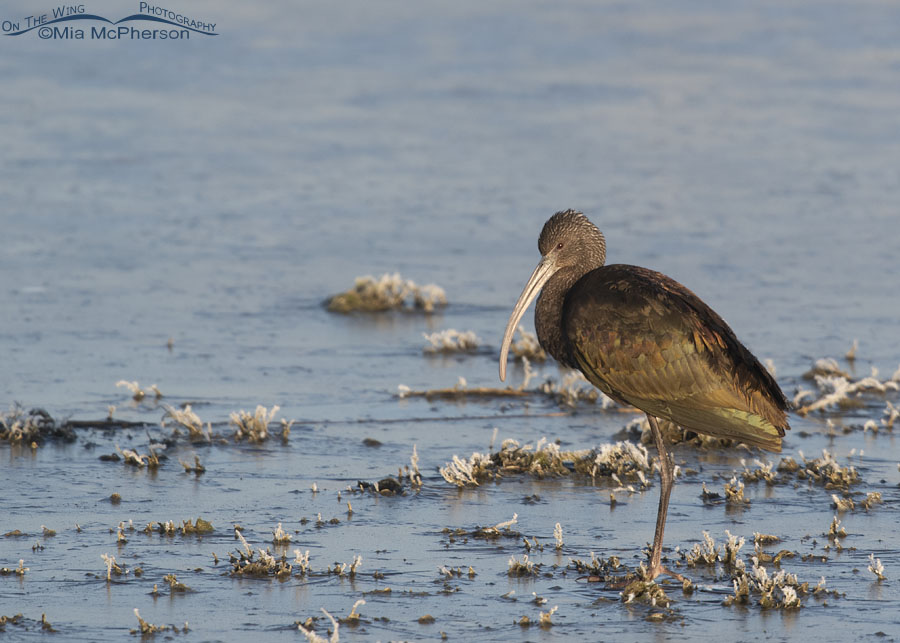 White-faced Ibis resting on a frozen marsh – Nikon D500, f7.1, 1/800, ISO 500, Nikkor 500mm VR with 1.4x TC, natural light
White-faced Ibis resting on a frozen marsh – Nikon D500, f7.1, 1/800, ISO 500, Nikkor 500mm VR with 1.4x TC, natural light
On my last trip to Farmington Bay WMA earlier this month I found a small flock of overwintering White-faced Ibis that were too far away to photograph. I’ve written often about how tough Great Blue and Black-crowned Night Herons are because they stick it out through our bitter cold winters in northern Utah but not much about White-faced Ibis that do the same thing.
Most of the White-faced Ibis that breed here in northern Utah do migrate to warmer climates for the winter yet there are small flocks that tough it out in the marshes even during the coldest and snowiest months of the year. I have seen overwintering White-faced Ibis at Bear River MBR during the years that I have been living in Utah though I find them most often at Farmington Bay WMA.
I photographed this overwintering White-faced Ibis on the frozen marsh at Farmington Bay in January of 2019 early one morning. The overwintering ibis can usually be found during the winter where there is open water but they also forage for food in the thick stands of phragmites and cattails.
With their long decurved bills, iridescent body feathers, red eyes, and long legs identifying these ibis in the marshes is fairly easy even for novice birders.
As abundant as White-faced Ibis are in the marshes here in northern Utah during their breeding season I don’t have nearly the number of images of them in my photo galleries or in my archives that I would like to have. I truly want and need to change that.
Life is good.
Mia
Click here to see more of my White-faced Ibis photos plus facts and information about this species.


Such pretty iridescence makes an odd juxtaposition with how cold this bird looks.
Birds migrate for food more than temperature. Food sources like insects, plants and seed are hard to find in winters where it is cold and freezes. Can you imagine the increase in calories they need in these cold nights? I wish the chicks were visible more often. The three amigos were out there the other day. I have not seen the one with a broken wing for some time.
Yet another hardy and beautiful bird.
I always think of White-faced Ibis as a “southern” bird not realizing that they breed in the northern Utah. We have had small flocks of American Robins overwinter here in Niagara for a number of years. Now we are having Red-winged Blackbirds overwintering as well.